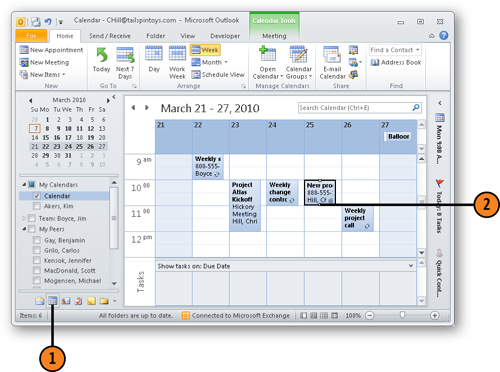You can print your Outlook appointment calendar, such
as your daily or weekly appointments, meetings, and events. Or you can
print an individual calendar item, such as a meeting item.
1. Print your Appointment Calendar
Click the Calendar icon on the Navigation Pane, and then click File.
Choose a calendar style in the Print Style area.
Click Print.

Note:
You can print your
calendars in Daily, Weekly, Monthly, Tri-fold, Calendar Detail, and Memo
Style. Print your calendar in each one of these styles and pick your
favorite one.
Note:
Print your appointment calendar
at the beginning of each week so that you can keep track of all your
upcoming events, appointments, and meetings. As schedules change, such
as a meeting being delayed or canceled, make these changes on the hard
copy as well as in Outlook. If too many changes happen, of course, you
need to print a fresh calendar.
2. Print a Calendar Item
Click the Calendar icon on the Navigation Pane.
Double-click the Calendar item you want to print.

Click Print.

Note:
If you want to print to a printer other than the default one, click the Printer drop-down list and select the printer.
Note:
Print a Calendar item
that has an attachment inserted in it. Click Print Options, and when the
Print dialog box appears, select Print Attached Files to print the
attachment.